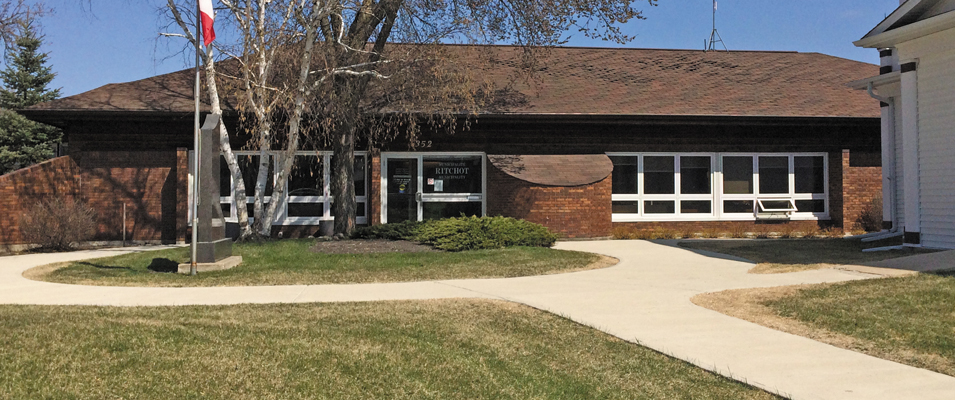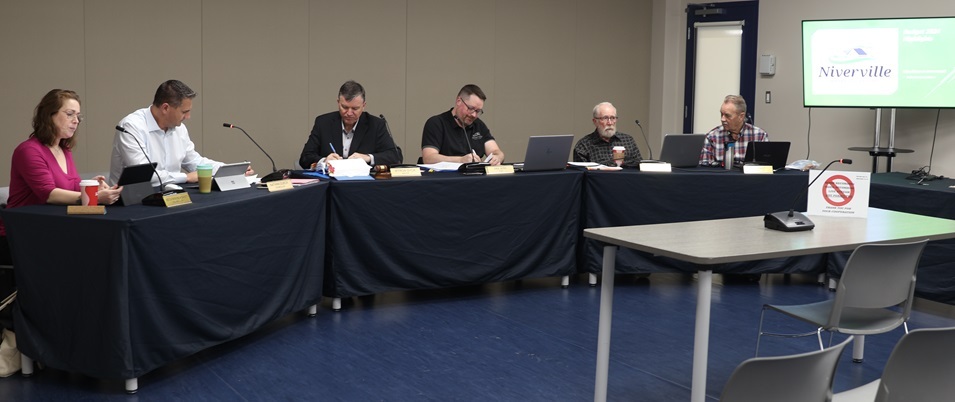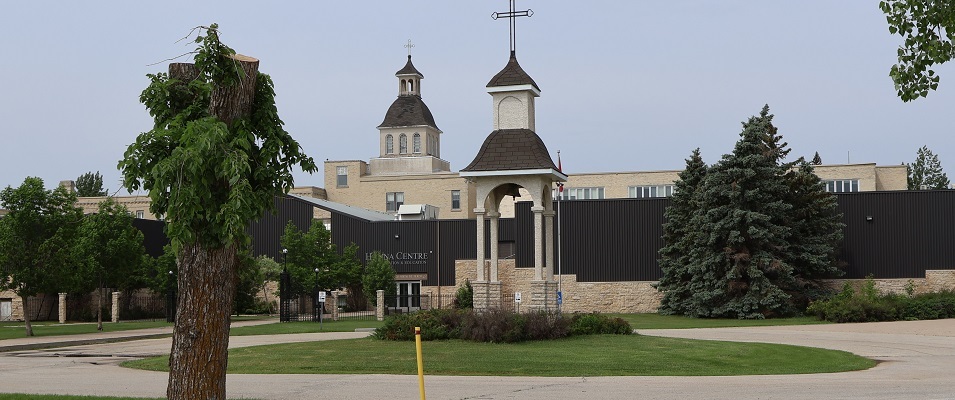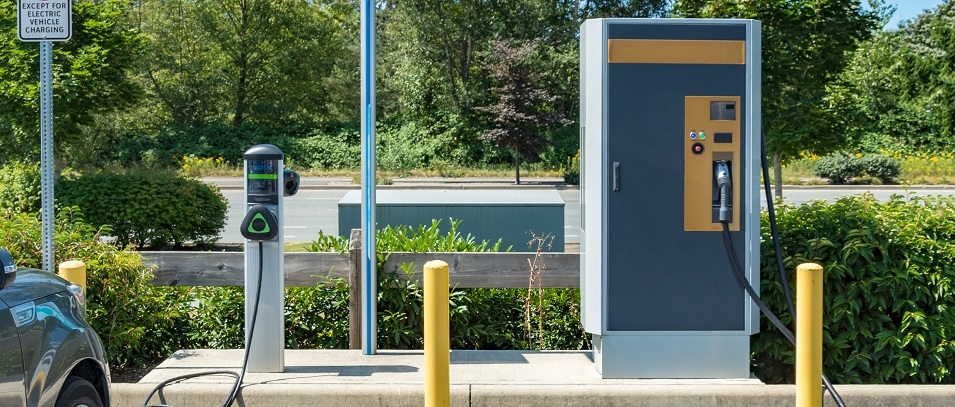
The Town of Niverville will be installing two Level 2 electric vehicle charging stations at the Niverville Community Resource & Recreation Centre (CRRC), which will allow four vehicles to charge at one time.
The announcement came on January 27, with the news that the town has received a grant from Natural Resources Canada (NRC). The installation costs will be shared between the town and the NRC grant. Once in use, drivers will pay for each charge.
“Charging stations will be on a pay-per-use platform,” says CAO Eric King. “The final procurement decision has not been made yet, as we have six proposals in front of us, so the rates [per charge] are not yet set.”
The town is excited to move forward with the installation with the help of a group called Eco-West Canada. Eco-West helps Western Canada’s municipalities with planning and implementing green economy infrastructure.
“They helped us secure the grant, as it was a multi-municipality project, and they also led the procurement effort on the equipment side of it,” says King.
Procuring the charging equipment is the next step. According to Plug’n Drive, a champion for electric transportation in Canada, these Level 2 chargers are the most common way to charge an electric vehicle. This type of charger requires a 240-volt power source, which is similar to what is required to run a home clothes dryer, and provides 30 kilometres of driving range per one hour of charging.
In North America, all electric cars come with a standard plug, meaning that any make or model of electric car will be able to use the charging stations.
Niverville’s goal is to have the stations ready by the time the CRRC opens this upcoming summer.
These stations will represent the first publicly accessible charging stations in Niverville, and it will be a big step towards building a network of charging stations throughout the southeast region.
“When it came time for the design of the CRRC, we were looking at the parking lot and there was infrastructure needed under the pavement if we would ever be looking at putting in charging stations,” says Niverville Mayor Myron Dyck. “We thought, this is where our world seems to be going and if there is going to be a need for electrical charging stations within the lifetime of the building, or the next 100 to 150 years, we need to think about this now. So the decision was made to put them in. That was already about a year ago. We made that decision so that we wouldn’t have to break up the parking lot now.”
This announcement comes the same week that Ritchot Mayor Chris Ewen said that he is pushing for communities in his municipality to move in the same direction and install public charging stations.
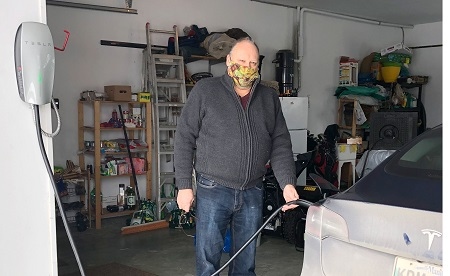
A Growing Market
Local electric car owners are excited about the town’s decision, even though the stations likely won’t benefit them directly as they have their own charging stations at home. More so, the town’s decision represents a forward-thinking mindset that sends a message to the community—and to the entire province—that Niverville values green energy.
Dr. Chris Burnett of Niverville owns a Tesla sedan. He knows of three other Tesla owners in the community, as well as a few other electric or hybrid vehicles, and he says the market is clearly growing.
“Most electric vehicle owners here own a garage and have a place to charge, so what the town is doing is really for visitors, and for growth,” says Burnett. “But for residents, it sends a message.”
Burnett says that in Europe, it’s common for people not to own a single-family home with its own garage, and so charging stations are everywhere. It is often an option for these drivers to charge their electric vehicles directly from ports on the side of the street.
In Canada, the market for electric vehicles hasn’t grown as quickly. One barrier has been the challenge of establishing a universal charging infrastructure. Different electric vehicles have used different methods of charging, making it necessary to manufacture adaptors for certain models if their owners plan to travel to places where different charging ports.
The popularity of electric vehicles is much higher in Europe than in Canada, and so far that could be due to greater population density and a more widespread public charging infrastructure.
“Tesla has brought out their own infrastructure system, which is now about 12,000 ports worldwide, and they give you a rapid charge, up to almost 1000 kilometres per hour. There is a supercharger almost every 200 kilometres along the TransCanada from one end of Canada to the other. They’re the fastest way. There’s a map with all of the information you need and shows you where the chargers are, and the number of those ports is increasing.”
Increasing Interest in Town
Our local gas stations have no plans yet to install electric charging stations, but although it’s more likely to spot an electric car in Winnipeg than in the countryside, Burnett feels there’s no reason that won’t soon change. He says there is a local market for charging stations.
“If you think about it, you’re going to have people coming down for hockey from the city, and increasingly we will see electric vehicle users coming through town to conduct normal activities and business,” says Burnett. “Right now, they say, the number of electric cars per normal car in North America is at 1.5 percent. But if you look at the graph, it’s going up exponentially every year, probably because the price is coming down and affordability is increasing. This year we’re seeing places like Ford overhauling the Mustang to electric. Almost all manufacturers are going that way. Diesel engines are being phased out. This last year, Tesla made and sold half a million cars.”
Public perception is that the reason electric vehicles haven’t been catching on in Canada is that we’re too spread out and it may be difficult to get where you’re going.
“Yes, it would be difficult going up to Thompson at the moment,” Burnett agrees. “But every year, more and more chargers are being put in. So it may seem like a small thing that Niverville is doing, but it is part of a mosaic popping up across the earth.”
Burnett’s travels across Canada have given him a unique insight into how the vehicles work while charging them across long distances.
“There is a charging station along the TransCanada in Saskatchewan that is quite good, and while I was there I found out that the local town had also put in a charging station for another make of electric vehicle so that even more vehicles could be serviced, so they’re popping up everywhere.”
When Niverville’s new charging stations are installed, they will eventually be added to the map and encourage people to drive out in this direction. Burnett says that this will set the town apart from other rural hamlets and send a clear message that the town is investing in growth.
“[The town has] put a state-of-the-art building in there. It’s green, it’s got geothermal energy as well,” says Burnett. “In Manitoba, almost all of our energy is already coming from hydro, so it is the most sustainable energy source for us. It’s a step in the right direction and we are now ahead of the curve. We are going to get an increasing number of people interested in our town because of this.”
Four Misconceptions about Electric Vehicles
It’s safe to say Burnett is an electric vehicle ambassador. He would love to see more green energy come into the community and encourages anyone considering an electric vehicle to make the transition away from gas engines.
One common misconception is that traveling at consistent high speed, such as on a highway, requires less energy because you use less energy to maintain speed than to reduce and accelerate repeatedly. Burnett says that’s not the case.
“You actually regain power by stopping and starting, because the vehicle will use the kinetic energy and transfer it back into the battery to charge it.”
Another misconception about electric vehicles is that they lack power to accelerate. Burnett says his vehicle will do 0 to 100 kilometres per hour in 4.5 seconds and is the most powerful vehicle he has ever owned.
Thirdly, many people who are unfamiliar with the new technology are concerned about how to service an electric vehicle if something goes wrong.
“People are concerned about where to go to fix them—and yes, there’s not a lot of places,” he says. “There’s one service station opening up in Winnipeg soon. But in two years my car has yet to go in for service and most cars don’t need service. There’s just nothing to service. There are no moving parts. There’s no oil to change, no filters to change. I did have one problem with a warning light that went on one time, so I booked an appointment with my app for the vehicle. At that time, somebody was coming in to do it on a contract basis. I brought it to a place on Lagimodiere [in Winnipeg], and it was solved. It was efficient. It was the best repairs I’d ever had to have done.”
Lastly, many people view the electric vehicle as cost-prohibitive.
“The major cost of the car is the battery,” he adds. “But battery prices have come down. It’s like any technology. If you remember what memory used to cost in a computer, now that really has come down and even bottomed out. Well, it’s the same with the batteries. They’re only getting more and more affordable.”
Technology, Features, and Winter Considerations
Most people know what prevents them from buying electric, but they don’t always fully appreciate the greatest appeal: the advanced technology. Most electric vehicles have technology that completely revolutionizes the way we drive.
The most obvious advantage is the cost of the electricity.
“If you leave it overnight, you’re completely charged,” Burnett says. “It’s costing [our family] about $20 per month. In other words, for a full charge, it’s about $5, which is just incomparable to gas.”
And in Burnett’s experience, while there are many electric vehicles on the market, the Tesla is the most advanced of them all.
“This car goes further and goes faster than any other car I’ve owned. It has 360-degree camera views for constant external surveillance and does external updates to its technology automatically. It has one-pedal driving, which means that to go slow, you just take your foot off the accelerator and it will come to a full stop. It has four-wheel drive. When you’re on cruise control, it will stop or avoid objects. It drives itself.”
In winter, Burnett says the vehicle may have difficulty detecting the white line on the highway if there is too much snow, so there are times when he doesn’t use the automatic driving feature. But otherwise, he says it’s the ideal winter car.
“If there are difficult road conditions, it will alert you to keep your hands on the wheel. It has ABS and handles ice and slush very well. I have winter tires on it. But you don’t have a drive shaft; you have two motors, one in the front and one in the back. And so they communicate and the wheels differentiate between the two of them to increase control,” says Burnett. “Another winter perk is that because there are no moving parts in the engine, you don’t have to wait for your engine to heat up the oil and warm up. You literally don’t have to warm up your car, which means the heat is also instantaneous.”
The cold is one thing to consider about storing and charging an electric vehicle, though. Burnett says you will lose up to 30 percent of your charging capacity during the winter to keep the vehicle warm when it’s parked in cold conditions. This means that if he heads to the city, he typically finds a place to charge. But in summer, it also means that he only charges his vehicle once per week.
Another unique consideration is the volume of the engine. The Tesla makes virtually no noise when starting and driving, which is noteworthy. In fact, Burnett says that the complete absence of engine sound will leave any muscle car enthusiast shocked.
When asked if he misses the sound of a classic car engine, Burnett laughs. “Well, yes, but that’s different. It certainly has its place.”






